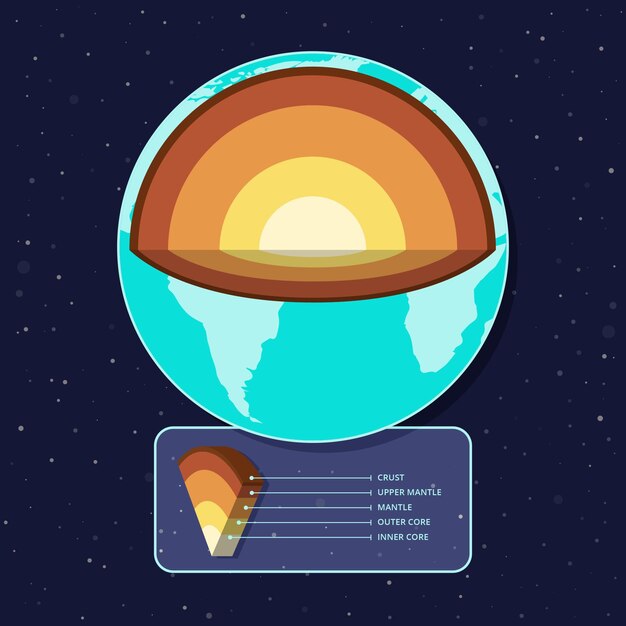

Black holes are mysterious cosmic objects that capture the imagination of both scientists and dreamers.
Black holes are regions of space with such strong gravitational forces that nothing, not even light, can escape them.
The first black hole ever discovered was Cygnus X-1, located about 6,000 light-years away from Earth.
Black holes can form when massive stars collapse under their own gravity.
The size of a black hole is determined by its mass, with larger black holes having stronger gravitational pulls.
Black holes are not empty voids but rather incredibly dense concentrations of matter.
The event horizon of a black hole is the point of no return, where any object crossing it is trapped forever.
Time near a black hole is drastically altered due to its intense gravitational field.
While black holes are black and cannot be directly observed, their presence can be detected through their effects on nearby objects.
The strongest known black hole to date is believed to be located in the quasar known as TON 618 and has a mass 66 billion times that of the Sun.
The phenomenon of spaghettification occurs when an object falls into a black hole, stretching it into long, thin strands.
Black holes can eject powerful jets of particles and radiation from their poles, known as relativistic jets.
It is possible that black holes could serve as gateways to other universes or dimensions.
Theoretical physicist Stephen Hawking proposed that black holes emit a form of radiation called Hawking radiation, which slowly causes them to lose mass over time.
Stellar-mass black holes, with masses around 5-100 times that of the Sun, are believed to be more common than supermassive black holes.
Contrary to popular belief, black holes do not suck everything in their vicinity like a cosmic vacuum cleaner.
The study of black holes has revolutionized our understanding of the universe and the nature of space and time.
Supermassive black holes, with masses ranging from millions to billions of times that of the Sun, are thought to reside at the centers of most galaxies.
Black holes can distort light and create gravitational lenses, acting as cosmic magnifying glasses.
The black hole at the center of our own galaxy, known as Sagittarius A*, has a mass of about 4 million times that of the Sun.
Primordial black holes are hypothetical black holes that could have formed in the early universe shortly after the Big Bang.
Neutron stars can sometimes collapse into black holes, creating powerful cosmic explosions known as gamma-ray bursts.
The study of black holes pushes the boundaries of our understanding of physics, challenging long-held theories like general relativity.
The term black hole was coined by physicist John Michell in 1783.
Black holes can warp the fabric of spacetime around them, causing clocks to tick at different rates.
The largest black holes we know of are called ultramassive black holes, with masses exceeding 10 billion times that of the Sun.
The existence of black holes was confirmed indirectly in 1916 by Einstein’s theory of general relativity.
. Black holes can gobble up nearby stars and release immense amounts of energy in the process.
Falling into a black hole would be a one-way trip, as the intense gravitational forces would tear apart any normal matter.
Black holes are not eternal entities; eventually, they can evaporate completely through Hawking radiation.
The black hole at the center of the galaxy NGC 1277 has a mass equal to about 17 billion times that of the Sun.
Recent studies suggest that black holes could play a crucial role in the formation of galaxies.
Black holes can distort space in such a way that they could hypothetically act as time machines.
The spinning motion of black holes creates a phenomenon called frame-dragging, where the surrounding spacetime is dragged along with the black hole’s rotation.
The term singularity refers to the central point within a black hole where matter is infinitely compressed.
The event horizon of a black hole appears black because no light can escape it.
It is believed that there may be a supermassive black hole at the center of every galaxy in the universe.
The gravitational waves observed in 2015 were generated by the collision of two black holes.
Outside the event horizon, the gravitational pull of a black hole decreases with distance, allowing objects to orbit it like any other massive object.
Black holes can distort space so strongly that they create wormholes, theoretical shortcuts through spacetime.
The size of a black hole’s event horizon is directly proportional to its mass, meaning larger black holes have larger event horizons.
Black holes can grow by consuming nearby matter and merging with other black holes.
The discovery of black holes has prompted scientists to reconsider the nature of time and spacetime itself.
The escape velocity near a black hole is greater than the speed of light, which is why nothing can escape it once it crosses the event horizon.
Black holes present one of the most intriguing and enigmatic mysteries of the universe, captivating the curiosity of scientists and inspiring awe in everyone who learns about them.
Around the world, coffee enthusiasts enjoy Monin coffee concentrate since it is a multipurpose product. Conveniently combining…
The Importance of Choosing the Right Shower for Your Bathroom Renovating your bathroom can be…
Usain Bolt holds the record for the fastest 100-meter sprint in history.Bolt was named Sportsman…
Love is in the air... and it smells suspiciously like chocolate!Roses are red, violets are…
Life's a beach, take a picture and relax.Sun, sand, and salty kisses. That's what beach…
Hungary is home to the largest thermal water cave system in the world.The Rubik's Cube…